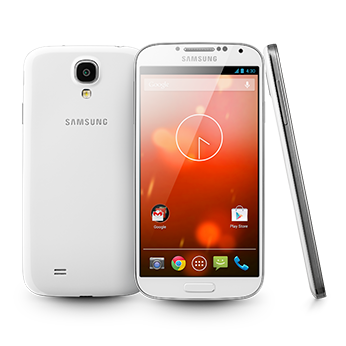
As part of its drive to offer Internet access to more and more people in the U.S., Google has been working closely with the FCC to make a public TV whitespace database available to all. The search giant started a test program a couple of months back, and now the FCC has finally approved of its use. This means that Google can finally begin operating this database which will be accessible to the public.
This whitespace database is primarily a system that will support unlicensed radio devices that transmit on unused spectrum channels in the wireless bands normally used by broadcast TV. It is required that all unlicensed TV radio devices connect with the database system first, in order to get a list of available channels for operation. Only those channels that are not currently used by authorized radio services will be listed, and availability will depend on individual geographical locations.
Google has been actively trying to promote the use of unused TV whitespace for years in order to bring Internet access to rural areas in a cost-effective manner. It may still be a ways until Google fully realizes its plan, but it certainly is getting closer and closer to it each day.
Additional details of the FCC approval announcement is available in the press release posted below.
Office of Engineering and Technology Announces the Approval of Google, Inc.’s TV Bands Database System for Operation
ET Docket No. 04-186
The Commission’s Office of Engineering and Technology (OET) announces that it has granted approval for Google, Inc. to operate its “TV bands database system” to provide service to the public.[1] This database system will support unlicensed radio devices that transmit on unused channels in the spectrum bands used by broadcast television (TV white spaces, or TVWS).
The Commission’s Part 15 rules (47 C.F.R. § 15.701 et seq.) require that unlicensed TV radio devices operating on TV white spaces (TVBDs) contact an authorized database system to obtain a list of channels that are available for their operation (i.e. channels not occupied by authorized radio services) at their individual locations and operate only on those channels. These devices are required to provide their geographic locations by means of a secure Internet connection to a TV bands database system authorized by the Commission. When a device provides its location to a database, the database will then return a list of channels available for operation by the device at that location.
The FCC rules require that TV bands database systems protect the following radio services: 1) broadcast television stations (including full power, TV translator, low power TV, and Class A stations); 2) fixed broadcast auxiliary service (BAS) links (regular licensed and temporary); 3) receive sites (and received channels) of TV translator, low power TV, and Class A TV stations and multichannel video programming distributors (MVPDs); 4) private land mobile and commercial mobile radio service operations; 5) offshore radio telephone service operations; 6) radio astronomy operations at specific sites; and 7) low power auxiliary service operations (principally licensed and certain approved unlicensed wireless microphone venue sites). Except for MVPD receive sites, sites where licensed wireless microphones are used, approved unlicensed wireless microphone venues and temporary broadcast auxiliary facilities, the necessary protection data will either be extracted by Google from the Commission’s databases or are specified in the rules. Operators of facilities for which information is contained in the Commission’s records or provided in the rules do not need to take any action to obtain protection from TV bands devices.
Operators of MVPD receive sites, wireless microphones users, and operators of temporary BAS links must specifically register their sites to receive protection from TV bands devices. As required under the rules, Google is providing facilities for registering for these operations through its TVWS database system website at: http://www.google.org/spectrum/whitespace/index.html. The rules also provide that responsible parties may request that the Commission approve protection at venues where unlicensed wireless microphones are used. Such approvals will allow parties to register for protection of unlicensed wireless microphone operations from TVBDs at the venues. Requests for approval of protection of wireless microphones at venues will be made available for public comment, and the Commission will subsequently review them for approval. All registrations entered with a given TV bands database will be communicated to the other TV bands database(s) so that registrations will not need to be entered in multiple databases. Currently, the Commission has also approved the Spectrum Bridge, Inc. and Telcordia Technologies, Inc. TV bands database systems for operation (see Public Notice released December 22, 2011, DA 11-2044).
Questions regarding this Public Notice may be directed to Alan Stillwell at (202) 418-2470 or Hugh L. Van Tuyl at (202) 418-7506.
By the Chief, Office of Engineering and Technology.
from Android Authority by David Gonzales






